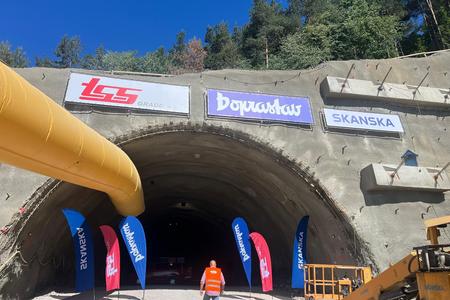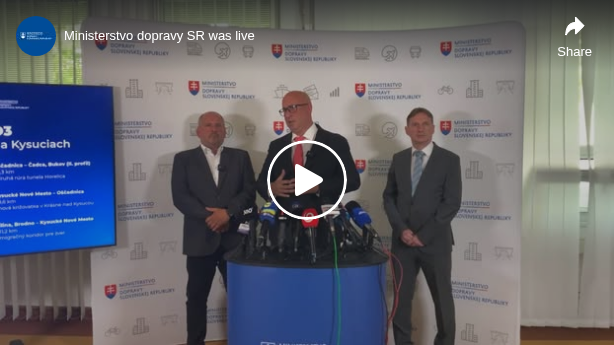Slovakia is set to begin construction on a long-delayed motorway through the northern Kysuce region after the country’s procurement authority dismissed the last in a series of legal challenges that had paralysed the tender process for months.
Transport minister Jozef Ráž, a nominee of the governing Smer party, said he expected diggers to appear on site before the end of the year. “All tenders for the D3 motorway are complete. Two sections already have building permits, and the third should follow in the coming days,” he told reporters on Monday. Contracts with the winning bidders are due to be signed by the state-owned National Highway Company (NDS) by the end of September.
The D3 – part of a key north–south corridor linking Slovakia with Poland – will be built in three stretches at a combined cost of €890m, more than €300m below the €1.2bn originally budgeted, thanks to competitive bidding. Financing will come largely from EU structural funds, which will cover 85 percent of the cost, with the remainder provided by the state budget.

Protracted tenders cut costs by €300m
The procurement process, launched last year, was dogged by repeated objections from losing bidders. The largest section – an 11.2km stretch from Žilina–Brodno to Kysucké Nové Mesto – was awarded only last week after the procurement office rejected the final complaint. A consortium led by Váhostav secured the contract for €399m, about €100m less than forecast.
Skanska won the 9.6km Kysucké Nové Mesto–Oščadnica section for €261m, undercutting projections by €46m, while a grouping of Váhostav, Metrostav and Duna Aszfalt took the 5.3km Oščadnica–Čadca contract for €230m, €76m below estimates.
Ráž insisted the sharp discounts did not reflect reckless underbidding. “The bids differed only by a few million euros,” he said. “The winners did not challenge the results, so we assume the prices are realistic and margins reasonable.”
Completion unlikely before 2030
Even if contracts are signed this autumn, construction is expected to take between three and a half and four and a half years. The final section – which includes a second tunnel tube at Horelica – is unlikely to be finished before 2030.
That delay will prolong congestion on the existing I/11 road, one of Slovakia’s busiest arteries, choked by lorry traffic to and from Poland. Officials estimate that once completed, the new motorway could cut journey times by more than ten minutes and divert up to 70 per cent of traffic from the most crowded stretch.
“The savings mean we can finance other bypasses – for example around Košice or Zvolen,” Ráž said, adding that he hoped – unusually for Slovak road projects – that the final bill would not rise once construction is under way.


 Čadca and the D3 motorway, northern Slovakia (source: Facebook - NDS)
Čadca and the D3 motorway, northern Slovakia (source: Facebook - NDS)
